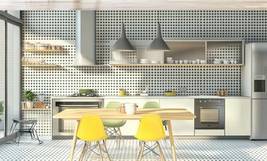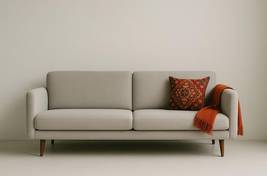Eco-Interior Design for Healthier Homes
Organic Fabrics: From Muesli to MuslinOur journey begins with the delightfully intricate world of organic fabrics. No, not the kind of fabric that adorns the muesli-munching, hemp-wearing granola crowd. We're talking about sophisticated materials that can transform your home into an eco-friendly haven with panache. Organic cotton, jute, and linen are not only sustainable and biodegradable, but they also promote healthier indoor air quality by reducing the presence of allergens, chemicals, and irritants.Imagine your home adorned with elegant drapes made from toxin-free silk, your feet caressing a hand-knotted wool rug devoid of synthetic dyes, and the sumptuous sensation of organic flax linen sheets wrapped around your body like an eco-conscious burrito. Bask in the knowledge that you've made a stylish and responsible choice for your home and the planet.Mid-Century Vintage: When Furniture Had Good PostureNow, close your eyes and cast your mind back to a time when furniture was handcrafted with love, integrity, and good old-fashioned elbow grease. A time when engineered wood was an abomination, and the word "particleboard" was yet to be invented.That's right, we're talking about the mid-century vintage era, when furniture was built to last, and not crumble like a cookie at the first sign of stress. What better way to embrace sustainability than by choosing pieces that have stood the test of time and are ready to grace your home with their timeless beauty?Besides, is there anything more satisfying than reclining on a 1960s Eames lounge chair while sipping a martini and listening to Sinatra on vinyl? I think not.Plants: The Original Air PurifiersBefore the invention of air purifiers with names that sound like they could double as intergalactic spaceships, nature provided us with the perfect solution to air pollution: plants. Not only do they add a touch of vivacity and freshness to your eco-interior, but they also work tirelessly to remove toxins, allergens, and other pollutants from the air.- Spider plants are the superheroes of air purification, tackling everything from formaldehyde to xylene (don't ask).
- Peace lilies, while sounding like the botanical equivalent of a hippie commune, are in fact powerful allies in the fight against benzene and acetone.
- Snake plants, in addition to having a name that would make Indiana Jones shudder, help remove trichloroethylene from the air, which, despite sounding like a villain from a comic book, is actually a common indoor pollutant.
Just remember to water your new green friends regularly, lest they wither away and bring shame upon your eco-interior design endeavors.Non-Toxic Paint: Because Nobody Likes a VOC MelodramaAs you embark on your journey towards a healthier, more eco-friendly home, it's time to address the elephant in the room: volatile organic compounds (VOCs). These sinister-sounding chemicals, found in traditional paints and adhesives, are responsible for that "new paint" smell we all know and loathe. Not only do they contribute to indoor air pollution, but they can also irritate the eyes, nose, and throat, and cause headaches, dizziness, and nausea. In short, they're worse than the last guest at a dinner party who refuses to leave.Thankfully, non-toxic, low or zero-VOC paint options are now widely available, so you can coat your walls in color without coating your lungs in chemicals. Go on, give your home a fresh, eco-friendly lick of paint, safe in the knowledge that you won't be inhaling a toxic cocktail of dubious substances.LED Lighting: The Lightbulbs Your Wallet and Planet LoveFinally, let's shed some light on an aspect of eco-interior design that's often overlooked: energy-efficient lighting. While we're all aware of the benefits of LED bulbs (lower energy consumption, longer lifespan, reduced environmental impact), they also serve a more subtle, yet equally important purpose in your eco-interior: they help create a cozy, inviting atmosphere without emitting the unpleasant, soul-sucking glare of their incandescent counterparts.Picture yourself curled up on your vintage Eames chair, bathed in the warm, ambient glow of a dimmable LED bulb, sipping a glass of organic wine, and listening to the soothing rustle of your air-purifying plants. Now that's what I call eco-interior design nirvana.And there you have it, dear eco-warriors. By incorporating these elements into your home, you'll not only create a healthier, more sustainable living environment, but you'll also be the envy of your friends with your impeccable taste and environmental savoir-faire.
|
|




